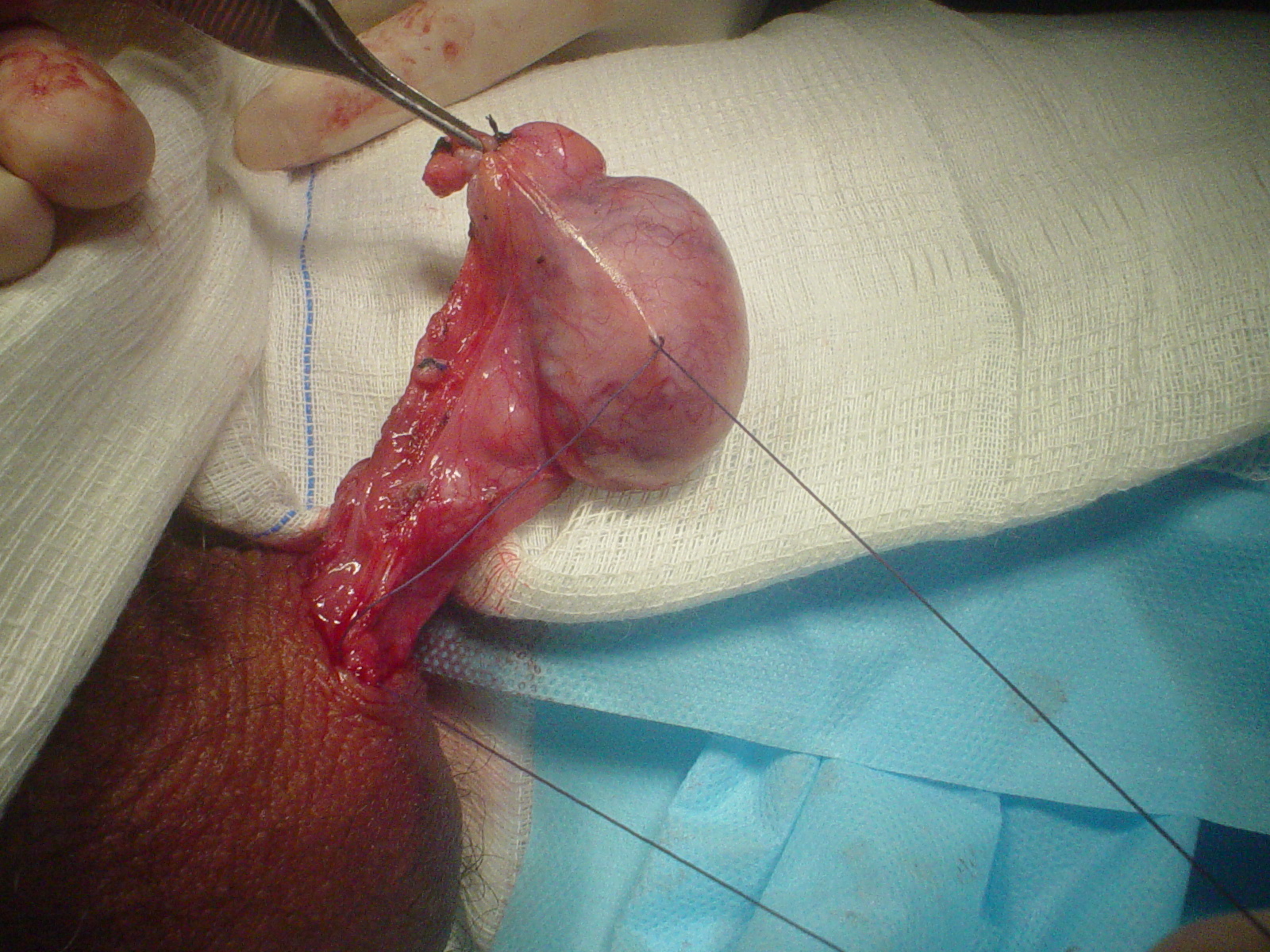|
Back to Fall Congress
Trans-Scrotum “En Bloc” Varicocele Ressection: A New Approach That Prevents Post Operative Hydrocele
Marcelo P. Braz, MD, Fábio Martins, MD, Andrea Castagnaro, MD, Celso Prudêncio, MD, Diego M. Capibaribe, MD, Germano M. Quindós, MD, Thiago C. Santos, MD, Antonio C. Junior, MD.
HOSPITAL FEDERAL DE BONSUCESSO, RIO DE JANEIRO, Brazil.
BACKGROUNDS
The prevalence rate of prepubertal and adolescent varicocele is similar to that reported for adults (14-20%). At this age , the main complaint is a left scrotal swelling. Indications for varicocele surgical repair are still controversial, but it is accepted as a main indication for surgical intervention the presence of significant testicular hypotrophy (assimetry>20%) and large varicoceles (grade III). Several techniques with proven good results are used to the repair varicocele, but with different complication rates(testicular atrophy, hydrocele, recurrent varicocele). An alternative approach to treat varicocele that prevents post-operative hydrocele is presented.
METHODS
Data from 21 patients with surgically repaired left varicocele, were retrospectively analyzed. All patients had grade III left varicocele and 20% decrease in left testicular volume when compared to the right testis. Colour Doppler Ultrasound (CDUS) of spermatic cord and testis was done preoperative, 2 months and one year after the procedure. Subsequent physical evaluation was done in an yearly basis . The procedure was done through a transverse left scrotal incision to approach the spermatic cord. The anterior pampiniform plexus was dissected en bloc from the head of epididymis to the external inguinal ring, taking caution to avoid any injure to the vas deferens and adjacent tissue. Optical magnification with 2,5/3 X loupes were used. The tunica vaginalis is everted and orchiopexy is done into a previously dissected subdartos pouch. Data concerning postoperative testicular atrophy and hydrocele development were analyzed .
RESULTS
Ages ranged from 8 to 15 years (median:13,4 years) and postoperative follow-up ranged from 1 to 8 years (median:4,9 years).No patients presented signs of dilated veins in the 2 months and 1 year post-operative CDUS. No patients show residual varicocele on physical exam . At one year, ultrasound scan disclosed symmetrical testicles in all patients, but one. Even this patient had an increase in the left testicular volume, comparing pre-operative status. No patients presented with post-operative hydrocele or testicular atrophy in the long term follow-up.
CONCLUSION
The surgical treatment of varicocele through the scrotum combined with eversion of the tunica vaginalis and orchiopexy is an easy technique, with good long term results. In the long term follow up no harm to the left testis was observed and hydroceles are inexistent.



Back to Fall Congress
|


